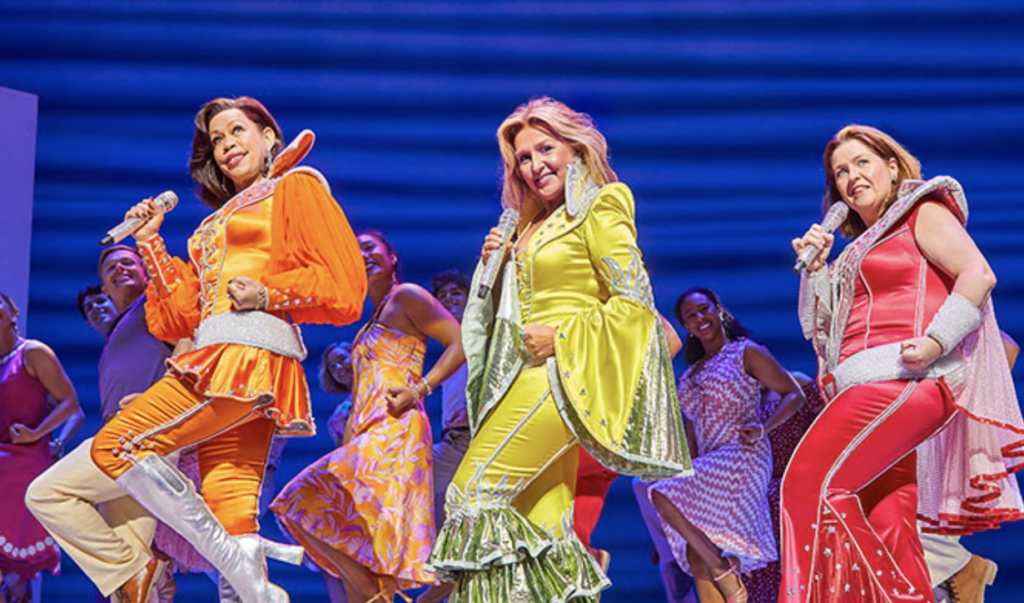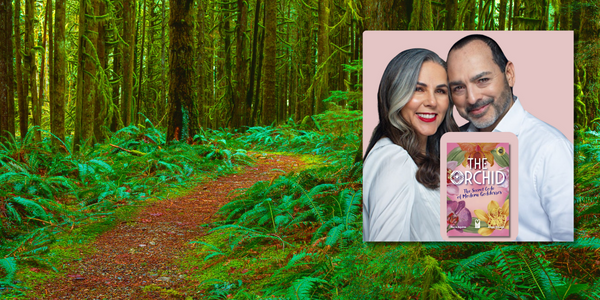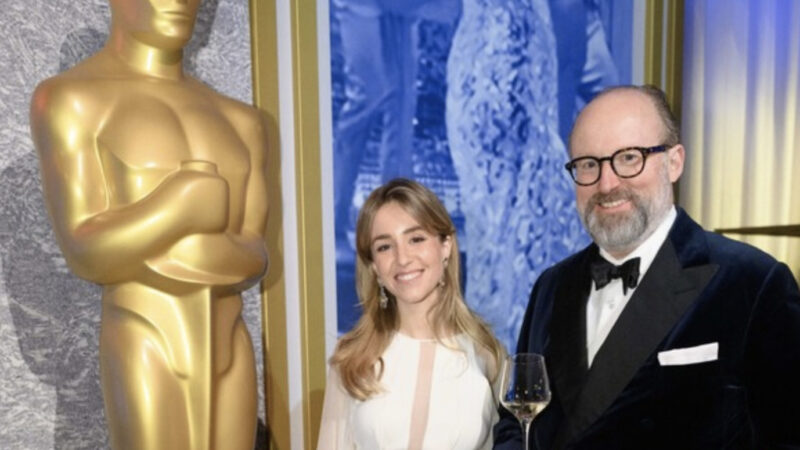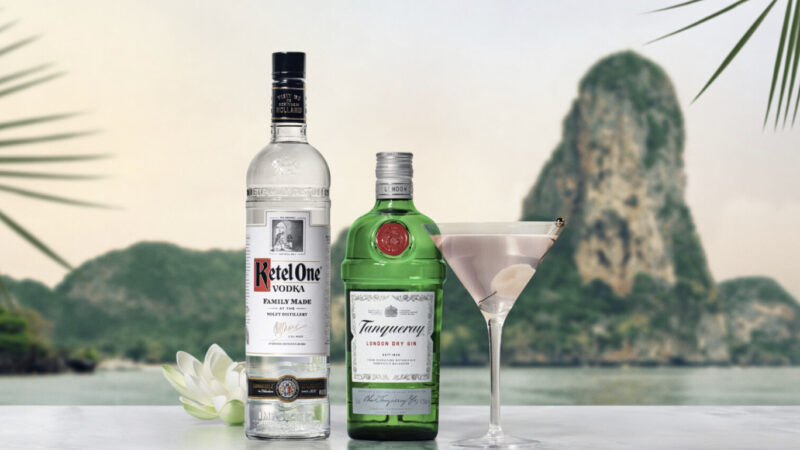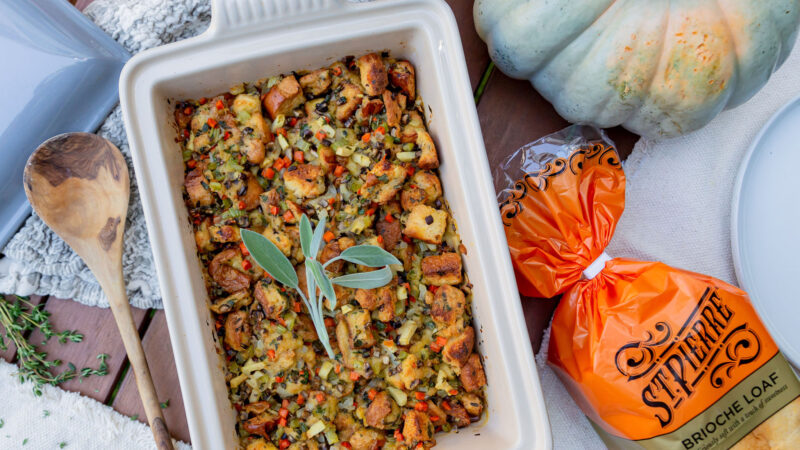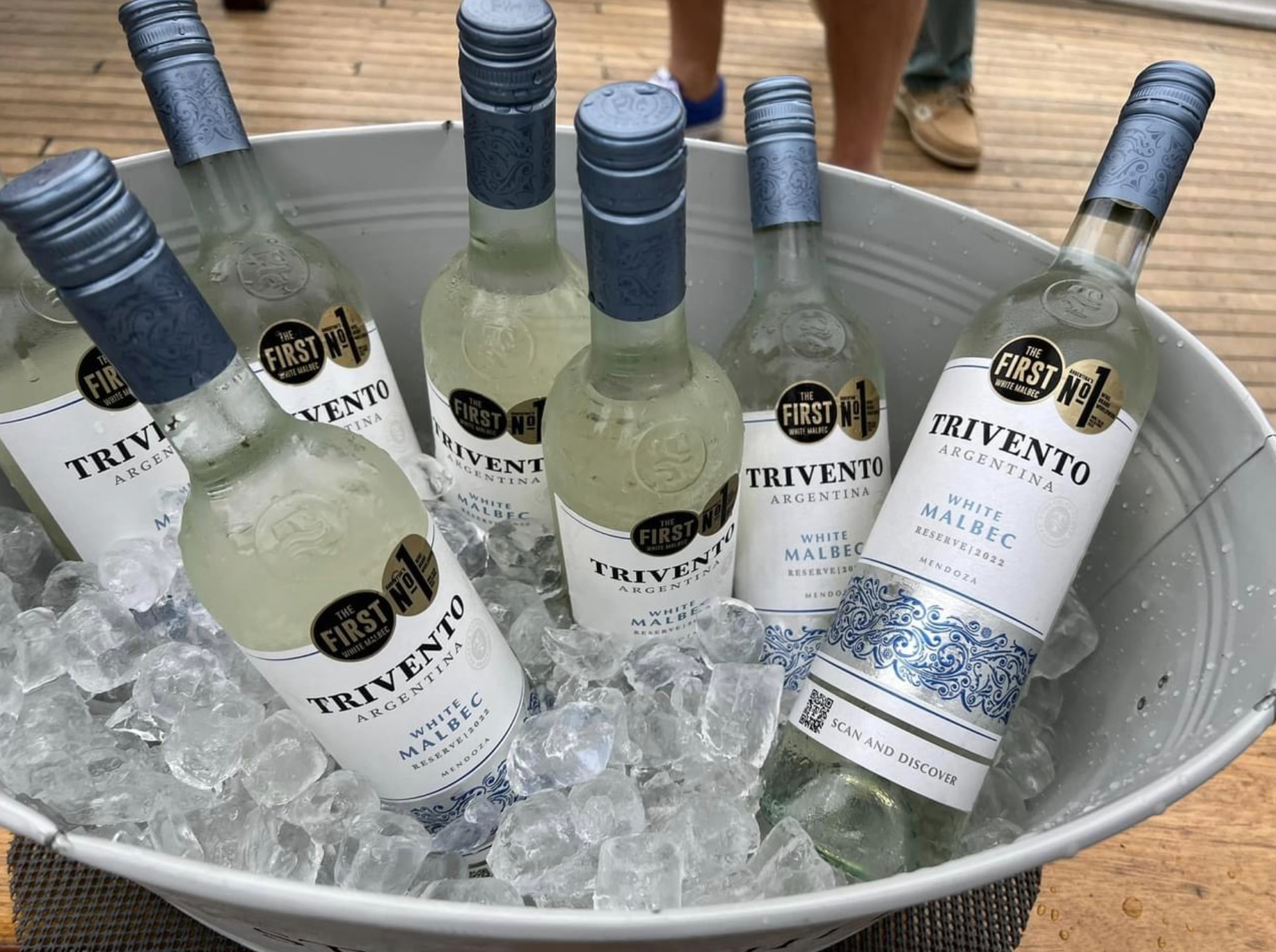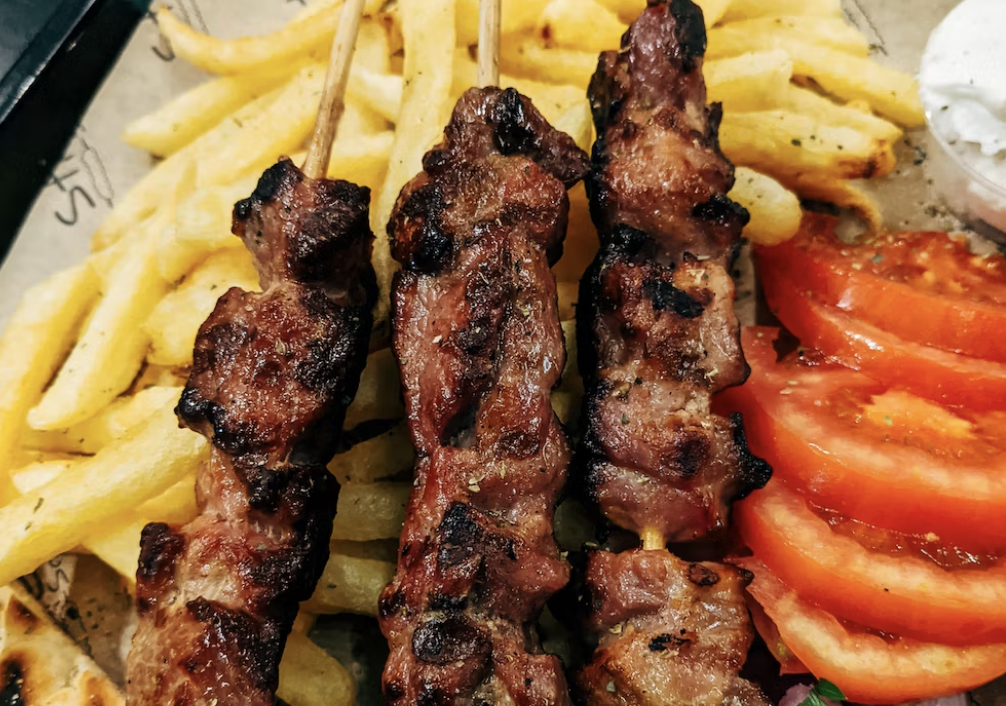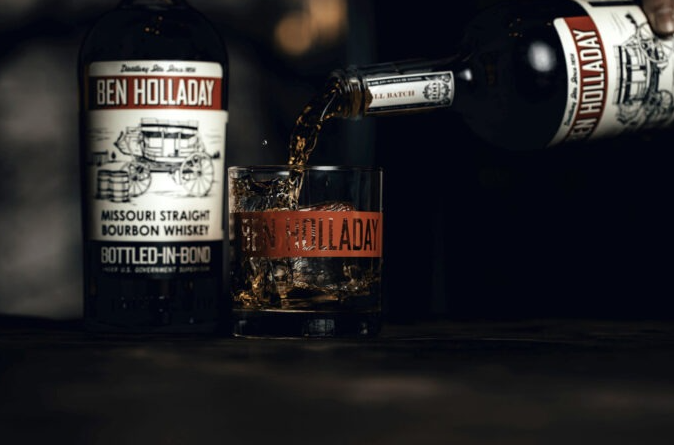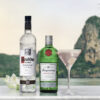Bring Great Flavors to your Philly Thanksgiving with Wine Ideas from Winemaker Brian Cheeseborough.
Thanksgiving is coming up fast, and you just have a few days left, do not panic just yet.
Most people are not “hosting” a Thanksgiving; instead, they are guests. Whether its family, friends, or you are the plus one, it is always better to make a good impression – and what better way than with an exceptional wine or two?
Wine can be inexpensive; our winemaker suggested a few wines between $15-$45.
Brian Cheesborough has more than 20 vintages of wine experience and made 90+ point wines in 6 different regions worldwide (California, France, New Zealand, Argentina, and more). He is an expert at pairing flavors and (more importantly) how to fix sour or off flavors – think dry turkey. (yikes!)

Winemaker Brian Cheeseborough shares Delicious Wine Pairings for Your Thanksgiving Feast
Take it away, Brian!
Thanks for having me. I’m excited to share these ideas because there are two goals: if the food is incredible, we want a wine that matches it and makes it even better (think like a dancing partner), and secondly, if the food is not great, we want a way to elevate the experience and fix the mistake.

Wine can do that! Most of these wines are from vineyards I have worked with or fellow Fresno State alums, some of whom I sat in a lecture with about all things wine. Can’t find the exact bottle? There are numerous producers for these wines under $50 and some below $20 – follow the varietals.
So, let us get started.

Alexander Valley Vineyards – Gewürz, 2021 Mendocino County
Alexander Valley Vineyards – Gewürz, 2021 Mendocino County
This Gewürz can solve many problems. It is a great wine to start the night; It’s also great when you’re eating something dry or bland. Yes, it is on the sweeter side. The aromatics are floral, with enticing notes of apple, grapefruit, and citrus; the mouth is silky and rich. This will pair well with any course. I like it with turkey best!
Buy it here: AVV 2021 Gewürz – Organically Grown

Willamette Valley Vineyards 2021 Estate Chardonnay

Willamette Valley Vineyards 2021 Estate Chardonnay
Another great option to start the party. The nose is a fresh bouquet of apricot, lemon, lime, and honey. The mouth is rich and supple with flavors of golden apple, caramel, and vanilla, with a nice round, refreshing finish. You can easily pair this with rich seafood dishes like shrimp alfredo and crab-stuffed lobster tail. Also, creamy potatoes or spiced pumpkins. (If you end up with pumpkin or squash on your plate and try a glass of this, you will thank me later.)
Buy it here: Willamette Valley Vineyards – Estate Chardonnay

Pine Ridge Vineyards 2021 Chenin Blanc + Viognier White Blend

Pine Ridge Vineyards 2021 Chenin Blanc + Viognier White Blend
One more light suggestion to start off your feast! This is crisp, bright, and full of life. The nose is a bouquet of honeysuckle, and orange blossoms, with a twist of ginger spice. The mouth is full-bodied with refreshing acidity. Flavors of tangerine, lime, and green apple. It’ll pair great with a light salad, goat cheese, and olives.
Buy it here: Chenin Blanc + Viognier White Blend – Pine Ridge Vineyards
Now, let us go to the Reds!

Abacela Tempranillo Fiesta 2019
It has a gorgeous fruit-driven nose with aromas of red fruit, cherry, and plum. The mouth is sleek and silky, medium body with flavors of black currant and blueberry, with lush and velvety tannins. It would pair well with turkey, venison with traditional gravy, or cranberry.

Abacela Tempranillo Fiesta 2019
Buy it here: Abacela Tempranillo Fiesta
Dutton-Goldfield’s 2020 Mendocino Hills Pinot Noir

Dutton-Goldfield’s 2020 Mendocino Hills Pinot Noir
The nose starts telling you this is something extra special; classic rich blackberry, pomegranate, and a touch of vanilla to round out the aromas. The mouth is super juicy and decadent, full of bright red cherry and cola with a baking spice finish. You want this with your main entree – turkey, ham, and stuffing. The people at your party drinking this will be glancing at each other, smiling between bites – they will know why!
Buy it here: Mendocino Hills Pinot Noir

Porter Creek, Estate Pinot Noir, Russian River – 2019

Porter Creek, Estate Pinot Noir, Russian River – 2019
On the nose, red fruit notes with cherry and plum. On the mouth, medium body with moderate oak, black currant, and blueberry, with delicate tannins. This pairs well with lean meat.
Buy it here: Porter Creek, Estate Pinot Noir, Russian River
The critical thing to remember is that regardless of your budget, you can find a great flavor to pair with what you are eating. Also, the wine can “save” the day, just in case it ends up a little (or a lot) dry or bland. You are not the chef du jour for Thanksgiving, but you can still contribute to the sharing.
Brian Cheeseborough is currently the Director of Winemaking at FermForge in West Texas.
YOU MIGHT ALSO LIKE
Drink like a Movie Star: Clarendelle, Domaine Clarence Dillon Return as Official Wine Partner of 97th Oscars
Drink like a Movie Star: Clarendelle & Domaine Clarence Dillon Return as Official Wine Partner of 97th Oscars
Clarendelle & Domaine Clarence Dillon Return as Official Wine Partner of the Academy of Motion Picture Arts and Sciences, Academy Museum of Motion Pictures and Exclusive Wines Poured at the 97th Oscars Ceremony
Clarendelle and the family company Domaine Clarence Dillon announce the brand’s return as the official wine partner of the Academy of Motion Picture Arts and Sciences and the Academy Museum of Motion Pictures.
Wine for the Academy
The Academy Awards, renowned for their glamour and celebration of cinematic excellence, also feature a notable emphasis on fine wines during their events. A substantial amount of wine is served to accommodate the numerous attendees. For instance, during the 90th Academy Awards, over 2,400 bottles of wine were provided, equating to approximately 14,000 glasses.
Annually, the Academy hosts several official events where wine is prominently featured. The most notable of these is the Governors Ball, the official post-ceremony celebration, where distinguished wines and champagnes are served to winners, nominees, and guests. In addition to the main ceremony and the Governors Ball, there are various pre-show receptions and ancillary gatherings throughout the awards season, each offering curated wine selections to complement the festivities.
These events underscore the Academy’s commitment to providing a luxurious and celebratory atmosphere, with fine wines playing a central role in the experience.
For the third consecutive year, the prestigious family-owned wine company will exclusively pour exceptional red and white wines at the 97th Oscars® ceremony.
This partnership bridges the world of fine wine and film, elevating the Oscars experience for Hollywood’s biggest stars.
In addition to delighting guests at the Dolby® Theatre at Ovation Hollywood, Clarendelle and Domaine Clarence Dillon wines will be served at the iconic Governors Ball after the Oscars ceremony and the Official Oscars® Watch Party at the Academy Museum of Motion Pictures. This year, Governors Ball attendees can enjoy a glass of our elegant and contemporary wines while winners have their Oscar® statuettes engraved. The wines will also be perfectly complemented with a legendary gastronomic menu crafted by Wolfgang Puck Catering for an unforgettable evening.
“Before joining the family business, I began my career as a screenwriter, so to have the opportunity to partner with the Oscars for the third consecutive year is truly an honor,” said President and CEO of Domaine Clarence Dillon, Prince Robert of Luxembourg. “This collaboration is a natural extension of my family’s longstanding commitment and deep connection to film and the arts.”
Domaine Clarence Dillon will introduce two new wines for the star-studded events:
- La Clarté de Haut-Brion 2021: A sought-after white wine of rare delicacy with only 1,000 cases produced annually, La Clarté brings together the qualities of a fine white Bordeaux wine with fresh citrus and white flower aromas, followed by a crisp and refreshing finish of lemony brightness.
- Le Clarence de Haut-Brion 2015: Château Haut-Brion became the first Bordeaux vineyard to be named after its terroir, making the estate the first luxury brand in the world. The exquisite red Le Clarence de Haut-Brion 2015 is similar in style and elegance to its elder and encompasses all unique attributes of a fine wine with an attractive profile – smooth yet powerful, tasty and full-bodied, with notes of ripe fruit leaving an impression of freshness and volume, without heaviness.
Among the returning wine favorites are:
- Clarendelle Bordeaux White 2023: A refined and elegant wine, offering bright citrus notes of lemon and grapefruit, balanced by the smooth sweetness of pear and lychee.
- Clarendelle Bordeaux Red 2016: A wine with fruity aromas of red fruit and blackcurrant alongside floral overtones balanced by great tannic power and delicious velvety texture.
- Clarendelle Amberwine 2021: A complex, well-concentrated and modern sweet wine distinguished by its freshness and harmonious balance of floral fruit and acidity with a smooth finish.
Founded in 1935, Domaine Clarence Dillon is a family-owned group renowned for its prestigious Bordeaux estates, including Château Haut-Brion, Château La Mission Haut-Brion, and Château Quintus. Under the leadership of Prince Robert of Luxembourg, the company has earned a global reputation for excellence in winemaking, joining Primum Familiae Vini, an international association of some of the world’s finest wine producing families. Domaine Clarence Dillon has long been a supporter of the arts, with Prince Robert’s background and screenwriting playing an essential role in merging the worlds of wine and cinema by bringing Clarendelle and Domaine Clarence Dillon to the biggest night in Hollywood.
For more information, follow on Instagram @clarendelle @chateauhautbrion_ @chateaulamissionhautbrion @chateauquintus @leclarenceparis.
Philly Orders The White Lotus Season 3 with Patrick Schwarzenegger Sipping Ketel One Family Made Vodka and Tanqueray Gin
‘Sip into The White Lotus’ with Patrick Schwarzenegger for Season 3 with Ketel One Family Made Vodka and Tanqueray Gin
Ketel One Family Made Vodka, one of the bestselling and top trending vodkas (Drinks International, 2025), and Tanqueray Gin, the seven-time winner of the bartenders’ choice of gin (Drinks International, 2023), have long been at the forefront of cocktail culture, consistently shaping and elevating the craft with their unwavering dedication to quality and innovation.
The Cocktail Culture of The White Lotus: Sipping in Style
HBO’s The White Lotus isn’t just known for its biting satire and stunning backdrops—it’s also quietly shaped the world of cocktail culture. Set against the luxurious resorts of Hawaii and Sicily, the show’s characters are often seen clutching artfully crafted drinks, turning simple sips into statements about wealth, indulgence, and escapism. In Season 1, tropical classics like the Mai Tai and Pineapple Daiquiri make frequent appearances, aligning with the show’s Hawaiian setting and nodding to the tiki cocktail revival. These vibrant, rum-based drinks not only complement the scenery but also subtly underscore themes of paradise lost.
Season 2 shifts to Sicily, and with it comes a more European drinking aesthetic. Think Aperol Spritzes, Negronis, and chilled white wines, evoking la dolce vita while masking the tension simmering beneath the surface. The show’s cocktail choices aren’t just background props—they reflect character dynamics and mood. For example, Tanya’s over-the-top drink orders often mirror her chaotic, lavish lifestyle.
Since its debut, The White Lotus has inspired bartenders and fans alike to recreate its signature drinks, blending TV-inspired nostalgia with real-world cocktail trends. Whether it’s a Mai Tai or a Spritz, every glass tells a story.
In an exciting collaboration with Max and HBO, the two iconic brands invite fans of The White Lotus to experience the timeless elegance and charm that define both the series and their curated cocktail creations.
In anticipation of the series returning on February 16, on Max and HBO, Ketel One Vodka and Tanqueray Gin introduce, ‘Sip into The White Lotus,’ a dynamic, multifaceted collaboration which includes series-inspired cocktails, Thailand destination giveaway, immersive events and engaging content.
“Our partnership with Max and HBO’s hit series The White Lotus is a perfect blend of luxury and sophistication. The show’s exploration of timeless hospitality aligns perfectly with the craftsmanship behind Ketel One Vodka and Tanqueray Gin, both of which are synonymous with the highest standards of quality,” said Julie Yufe, Senior Vice President of Vodka, Gin and Rum at DIAGEO North America. “The show is a cultural phenomenon, creating its own universe of intrigue and vibrancy. As consumers increasingly value experiences, we’ve been intentional about crafting fan-centric moments where our brands can create memorable occasions with every sip.”
Inspired by the show’s luxurious destinations, the partnership with Max and HBO kicks off with an original short film starring actor and entrepreneur Patrick Schwarzenegger, who whisks viewers away to a dreamy Thai escape. As Patrick mixes The White Lotus Vesper Martini—crafted with Ketel One Vodka and Tanqueray Gin to embody the captivating elegance fans expect from the show—he invites viewers to immerse themselves in the world of The White Lotus, exploring its story, characters, and the lavish setting of the highly anticipated new season.
“Being part of the cast of The White Lotus has been an incredible journey, and I’m excited to partner with Ketel One Vodka and Tanqueray gin to bring fans closer to the unforgettable moments of season three,” said Schwarzenegger. “Just like these iconic spirits, The White Lotus is all about storytelling and savoring every experience. I can’t wait to watch the new season unfold while toasting The White Lotus Vesper Martini with friends and family.”
To toast to season three of HBO’s The White Lotus, Ketel One Vodka and Tanqueray Gin have crafted exclusive cocktails inspired by the season’s stunning Thailand setting: The White Lotus Vesper Martini and The White Lotus Punch.
The White Lotus Vesper Martini is an elegant twist on the traditional cocktail, featuring Ketel One Vodka and Tanqueray London Dry Gin as its smooth, classic base. It delivers a refined, refreshing tasting sip with a sophisticated balance of dry and fruity notes. A French white wine aperitif adds crispness, while lychee liqueur imparts a delicate floral sweetness. The White Lotus Punch strikes a perfect balance between tart and tropical, making it the ideal cocktail for any getaway. With a vibrant blend of Ketel One Vodka and Tanqueray London Dry Gin, it showcases tropical flavors of pineapple, mango, and lime. The gin lends a hint of herbal complexity, while the tropical fruits provide sweet, juicy depth.
The unique creations tap into a feeling of luxury familiar to a White Lotus guest while reimagining how fans can enjoy cocktails with a modern twist. Featured in The White Lotus limited-edition cocktail kits, these perfect accessories for viewing parties include everything needed to craft season three-inspired drinks at home. Fans 21+ can purchase the kits at https://www.cocktailcourier.com/pages/the-white-lotus-cocktails.
|
The White Lotus Punch ¾ oz. Ketel One Vodka ½ oz. Tanqueray London Dry Gin 1 oz. lime juice ¾ oz. mango syrup 2 oz. pineapple juice
Combine all ingredients into a highball glass filled with crushed ice and stir. Garnish with a pineapple wedge and serve. |
The White Lotus Vesper Martini ¾ oz. Ketel One Vodka ½ oz. Tanqueray London Dry Gin ¼ oz. French white wine aperitif 1 bar spoon or teaspoon lychee liqueur 1 bar spoon or teaspoon butterfly pea tea
Combine all ingredients into a cocktail shaker filled with ice. Shake and strain into a chilled martini glass and garnish with a lychee. |
Thanksgiving in Philly: perfect stuffing bread DOES exist – and it’s… [Find Recipe Inside]
This Thanksgiving in NYC, the perfect stuffing bread DOES exist – and it’s brioche. As in St Pierre Brioche Thanksgiving Stuffing
No Thanksgiving spread is complete without a hearty stuffing. While add-ins are a matter of preference, choosing the right bread is crucial. One underrated choice is eggy, rich brioche – and with St Pierre Bakery, you don’t need to go to France to get it.

Thanks to its butter and egg content, St Pierre’s Brioche Loaf provides the perfect balance of crisp toastiness while remaining soft and creamy inside, while its lightly sweet flavor adds a decadent quality that can still lean savory. Attached below is an approachable recipe for stuffing allowing for all the craveable crunch for the whole family with minimal effort required.

St Pierre Brioche Thanksgiving Stuffing
By @BrandiMilloy
Ingredients
1 loaf St. Pierre Brioche Bread
1/2 cup unsalted butter
1 medium onion, diced
3/4 cup celery, diced
3/4 cup carrots, diced
1 cup mushrooms, diced
2 large eggs
1 tbsp. fresh rosemary, chopped
3 sprigs fresh thyme, just the leaves
1 tbsp. fresh sage, chopped
1 small apple (granny smith works well), peeled and diced
Salt and pepper
Directions
-
Preheat oven to 350 F. Cut brioche bread into 1” cubes and bake for about 10-15 minutes until toasted.
-
Meanwhile, into a pot over medium high heat add butter until melted. Add onion, celery and carrots and cook until everything starts to soften, about 7 minutes. Add mushrooms and cook for 2 minutes longer. Remove from heat and set aside.
-
Into a bowl whisk together the eggs, herbs, apples, mushrooms, and salt and pepper. Add your cooked vegetables and mix to combine.
-
Pour mixture on top of toasted bread and stir to combine. Bake stuffing for about 45 minutes. If your stuffing starts to get too brown, cover until finished baking. Enjoy!
As America’s favorite brioche brand, St Pierre’s products are widely available via grocery stores nationwide as well as Walmart.
About the Author
Joe Wehinger (nicknamed Joe Winger) has written for over 20 years about the business of lifestyle and entertainment. Joe is an entertainment producer, media entrepreneur, public speaker, and C-level consultant who owns businesses in entertainment, lifestyle, tourism and publishing. He is an award-winning filmmaker, published author, member of the Directors Guild of America, International Food Travel Wine Authors Association, WSET Level 2 Wine student, WSET Level 2 Cocktail student, member of the LA Wine Writers. Email to: Joe@FlavRReport.comYou Might also like
-
Perfect Philly Summertime wine! Trivento launches #TheFirstWhiteMalbec with Winemaker Maxi Ortiz
Perfect Philly Summertime wine! Trivento launches #TheFirstWhiteMalbec with Winemaker Maxi Ortiz
There’s plenty of “other” product launches and then there’s Trivento’s Sunset Cruise launch for The First White Malbec. Clearly, Trivento is very excited.

NYC wine and food experts board the luxury yacht, from 1919, at Manhattan’s North Cove Premier Mega-Yacht Club & Marina.
A handful of NYC and East Coast wine and food experts board a luxury yacht, built in 1919, at Manhattan’s North Cove Premier Mega-Yacht Club & Marina. On-board, best-selling wine authors, top wine media, and NYC’s food and wine critics.

As we set sail, our wine glasses are filled with The First White Malbec in the world, produced by Argentina’s Trivento and Winemaker Maxi Ortiz.

It’s easy to be taken by the moment. You look up and see the majestic NYC coastline. Look around the yacht, even the most local New York cynics have their jaws agape. It’s just breath-taking to see.

Moments later, the crew aboard the Ventura Sailing Team are passing out delicious seafood and chicken-based appetizers to pair with Trivento’s White Malbec.

Ventura Sailing Team are passing out delicious seafood and chicken-based appetizers
We sail through the bay, passing the Brooklyn Bridge in the distance, coming up on Governor’s Island and of course, The Statue of Liberty.

Passing along the Brooklyn Bridge
Why Trivento’s White Malbec is a world-class Innovation
For over 150 years, Malbec has been grown widely throughout Argentina. Its deep purple color, rich aromas of plums and red berries. It’s perfect for smooth, supple red wines.
The fact that Winemaker Maxi Ortiz dares to take an incredible red wine and turn it into a white wine, shows world-class innovation, confidence and vinification prowess. But as we’ll learn further below, it wasn’t an easy process.
Ortiz later explains in detail, it took 4 years of trial and error. Getting closer and closer, but not perfect enough for him. What we taste today is a culmination of his efforts and lessons.
What does Trivento’s White Malbec taste like?
By now most of us on the yacht have had a second taste of the wine. It’s opening up and blossoming beautifully.
The color is surprisingly clear, crystalline.
The nose has aromas of white peach, grapefruit, subtle hint of red fruit.
It’s a very easy-drinking wine. Especially in the summer. The mouth has a refreshing acidity, light body. Notes of green apple. Pairs beautifully well with the seafood and light chicken dishes served here. I could also see it with a garden salad, caprese or sushi. Be daring and try it with BBQ as the acid will cut into the fatty meat.
Hearing from Trivento’s Team, Juan Jose Gil
Juan Jose Gil directs the Trivento brand in the United States.
He explains that Trivento was founded in 1996 by the group Concha y Toro. It was the first time they left Chile to make an investment outside of their origin when they chose Mendoza, Argentina.
They started with a very small vineyard of 154 hectares. Today these Malbec experts have 12 vineyards in four different valleys and over 1,764 hectares of vines. They offer Malbec at every price point and every value tier.
The company has three pillars: Innovation. Sustainability. Excellence.
From Juan Jose Gil’s explanation, all 3 pillars are thriving together as we sip their most innovative wine, from grapes farmed on their sustainable vineyards, enjoying its excellent quality.

Winemaker Maxi Ortiz playfully posing with the Statue of Liberty
Winemaker Maxi Ortiz Reveals His White Malbec Process
Ortiz has been working at Trivento since 2006, helping to build it into the fourth biggest winery in Mendoza.
2019 was their first vintage of Trivento White Malbec. But it’s come a long way from what the world is tasting today.
However, for him, it’s a very special wine for more that just the innovation it represents, but also a positive impact on society:
“Sales from this wine
go to a scholarship program that helps students
with low economic resources and high academic performance to finish schooling.”
How did he create the white Malbec?
He revealed parts of his 4-year process. He picked the grapes the last week of January, 40 days earlier than regular. Then they quickly pressed the grapes in order to separate the skin from the pulp. However it’s not “white” yet. Then it was more of a rose.
Then he revealed the biggest secret of the process. A winemaking method that is common with red wines, but not whites. Ortiz got creative, invented and daring – and it worked. And unfortunately, we’re not going to share it here today. As competition is already growing!
“We were the first winery [back in 2019] to make a white wine with a red grape, which is the Malbec.
And it’s fantastic because nowadays you can see at least 10 different wineries making White Malbec.
So this is the first White Malbec and
in a way Trivento creates a new category of wine in Argentina.”
The quality is clearly there, As Ortiz explains further:
“The grapes came from the same region, from the same vineyard,
from the same places that we use for our [traditional Malbec] Reserve.”
For those who follow NYC weather, it was supposed to be thunderstorms the day of the Sunset Cruise. Bravely and happily, the launch decided to move forward anyway!

The weather was dramatic and cloudy (but dry) all throughout the cruise. Then, as if anointed by a higher power, just as Ortiz finished speaking, the rain started.
A slow, steady rinse that grew stronger. By the time we returned to dock, it was a heavy downpour. But no one was complaining. Wet smiles all around.
If Trivento White Malbec has a way of brightening your day even amidst a heavy thunderstorm, imagine what it can do for your backyard barbecue?
Find more on the Trivento website
Follow Trivento on Facebook and Instagram.
Post Views: 364 -
Philly BBQ Holiday: Secret to Juicier Chicken? Shark Tank’s Turbo Trusser revealed by Brian Halasinski and Kirk Hyust.
Secret to BBQing a Juicier Chicken? Shark Tank’s Turbo Trusser revealed by Brian Halasinski and Kirk Hyust.
Want juicier chicken? Yes. More flavor? Yes. Get it all setup in seconds? Yes. Two guys who love good food decided to tackle the problem.

Luckily, a Chef and a Builder were on the team. And luckily the team has business smarts, creativity and can-do spirit. Lastly, the team got global attention by winning their way onto hit TV show Shark Tank where Kevin O’Leary got excited by the flavors, the team and their product.

Today Turbo Trusser partners Brian Halasinski and Kirk Hyust stopped by for a conversation about delicious food, creating a great team and the secret to cooking.
The below conversation was edited for length and clarity. Find the full conversation on our YouTube channel.

Can you guys share a memory about how being in the backyard with your family and friends inspired you to create the Turbo Trusser?
Brian Halasinski: Kirk and I have been working together on inventions for the last eight years and oftentimes we’ll have an idea that’ll come up and we’ll text each other and we’ll write it down in a notebook and then we’ll come and visit it later.
It just happened that I was getting ready to make chicken for my family and I was going to do a rotisserie chicken and I was trying to figure out how to tie this bird up with traditional strings. So I got my iPad and I’m watching a video.
I have to pause the video. My hands are covered in chicken juice. And after it was all done, it wasn’t done well.
I texted Kirk because he’s a trained chef from the culinary Institute. There’s gotta be a better way. We started working on the Turbo Trusser from there.

After your success on Shark Tank, Turbo Trusser has become a global hit. How have your backgrounds inspired where you are today?
Kirk Hyust: I’ve been a building contractor for 25 years. Before that I was a chef. I got burnt out [being a Chef] and then I started building things and that’s how Brian and I met. I renovated his house for him.
I was in the middle of inventing a wrench and Brian saw it [and said], ‘I want to start inventing too. You want to be inventing partners.’
We still haven’t quit our day jobs. We work seven days a week. Luckily working for us a lot of the time is cooking. Which is good.
You mentioned you are a trained chef. Tell us about your chef side.
Kirk Hyust: I went to the Culinary Institute of America in Hyde Park, New York. Classical French cuisine. We’re from Ohio, so I like meat and potatoes and hearty casseroles.
Do you have a favorite dish?
Kirk Hyust: Fettuccine Alfredo and Turbo Trusser chicken.
Brian, can we touch on your background and how how you ended up with TurboTruster?
Brian Halasinski: I have been in the pharmaceutical sales industry for the last 20 years. I have a fairly flexible schedule to where I’m on the road and can be on the phone and be multitasking quite a bit when I’m working.
I’ve had that entrepreneurial spirit in a way. Then when I met Kirk, he had invented this wrench and he was working on my house and he was there for it was a pretty decent sized project.
So over time we became friends. I became interested in the whole process of inventing.
And then with that, you could actually take your invention and license it to somebody, basically renting out your idea and collecting a royalty. Kirk and I always thought that would be great.
We did a couple of products and we licensed them. Didn’t end up working out […]. We learned a little bit about the failures. And then ultimately that day I texted Kirk and said, listen, we got to come up with a better way to trust a chicken or Turkey. And we looked out there and there was nothing available other than butcher’s twine, which has been the way it’s been done for a hundred years.
A huge majority of people cook chicken and turkeys the wrong way. That’s my assumption.
When we compare your final chicken to a poorly done chicken what’s the difference?
Kirk Hyust: Trusting actually is a technique that brings all the meat together. If you don’t trust a bird, you’re actually cooking five pieces of meat separately. You got two wings, you got two legs and thighs and a breast. What you do, when you truss a bird, you actually bring all the pieces together and it cooks as one piece of meat, so it’s cooked more evenly and it’s juicier.
If you don’t cook it, if you don’t tie it up, if you just throw it in the oven or on the grill, what happens is all the meat cooks separately. The breast is gonna be done before the legs. The wings probably are going to dry out and they’re going to be inedible. Because when you use the Turbo Trusser the wings are great.
It makes one ball of meat essentially and cooks it as one piece of meat instead of five.

Is it the ego of the grill master? Or how do we help people realize they can have a better bird?
Kirk Hyust: That’s a really good question because we get that a lot. People have never even heard the term truss. To truss a bird.
Your bird’s gonna be a lot better, but it’s gonna take you about five minutes to do it when it takes 20 seconds to use our product. Especially a Thanksgiving Turkey because that will dry out a lot faster than a chicken.
Brian Halasinski: With the Turbo Trusser, the way it’s designed it’s going to hold the stuffing in place too. So the stuffing’s not going to dry out the way it closes the cavity.
If you’re going to do a rotisserie, you absolutely have to tie that bird up or your legs and wings are going to be just flopping around the whole time.
Can we talk a little bit about the process going from zero to where we are today?
Brian Halasinski: It was when we came up with the concept.
First, we started making prototypes. We made them out of cardboard. Then we made them out of wood. Kirk’s got all these tools so we could easily cut things. Then through trial and error with prototypes that we could make cheaply, we ended up with a very similar design to what we have today.

Then from there, we found a local fabricating shop that was able to laser cut out some samples for us so we could actually cook with them. We did all these things, refining the process and refining the product down to where we wanted to make it. Then we had to make a decision: make this here in the U.S. or go overseas.
Kirk and I made a decision based on our beliefs and our values that we wanted to make it here in the U.S. Being in Ohio, we were close to Cleveland, Ohio. This was the rust belt. There’s still a lot of manufacturing here.
So within one hour of our headquarters, we were able to source everything we needed to mass produce and launch this product to the world from Canton, Ohio.
Kirk Hyust: We had six prototypes by the time we got to our seventh one. That was the one that we stuck with. We just kept refining the prototypes until we landed on the seventh one, which is that what in the stores or online.

Can you tell us a little bit about from prototype one to seven? How did we get there?
Kirk Hyust: When you’re doing a prototype, obviously you have to solve a problem. When you build a product, it has to work correctly or you’re going to get bad reviews.
But we started out with a couple different designs. We bought a chicken and a turkey; and we put this contour gauge on the leg, so that made the dips that you see now where the legs go into. Then we were in my shop, cutting it out and it looked like [bird] wings so we ended up putting the heads on it because it already had wings that the legs sat into the cradle.
It’s a lot of detail.
Kirk Hyust: Yes, exactly. We just got our patent […] issued for the very first time. Even if it’s a piece of stamp metal and 2 wires. How intricate it really is.
Kirk, between your chef skills and your contractor skills. A perfect combination of bringing those two skill sets together.
Kirk Hyust: It is. We have sales and numbers and Brian’s also creative. […]The technical stuff, the websites, we develop everything together, but we have our strengths, he has a master’s degree in business. So he’s trained really well for that.
So it’s lie our strengths and weaknesses definitely fit together with each other.

Can we just talk through in the most simple, basic steps, how to use the Turbo Trusser?
Kirk Hyust: It’s really very simple. I usually buy a five pound bird. [With] smaller birds, it still works. It goes up to a 10 pound chicken.
Then you take the plastic off, pull the packet of giblets and everything out of the inside. Rinse it off. Pat it dry with a paper towel and if you have time, put it in the refrigerator and let the skin dry out. Put the Turbo Trusser on it, hook the legs in, hook the wings.
Use duck fat or some kind of a binder to put your spices on it. Salt and pepper, your favorite rub, something spicy, something sweet. Coat it with some kind of oil, or ghee or olive oil.
Put it in the oven at 375 for an hour and a half until it hits 165 degrees. That’s pretty much in a nutshell how easy it is.
Brian Halasinski: The Turbo Trusser is just three pieces. You got the main piece. Then you have two hooks. The hooks are going to go through the holes on the body of the chicken. You’re going to put the sharp end through the hole. It’s going to lock into place with the other end.
So it’s simply, put the two hooks into the Turbo Trusser body. You hook them onto the wings. The legs go into the cradle and in 20 seconds, you’re done.

How do we get that strong-willed Backyard Grillmaster to give the Turbo Trusser a try?
Brian Halasinski: Just telling them to keep it simple and go back to what people have been doing for 100 years. And that’s using string to tie it up. Only we came up with a simpler solution. So it’s what everybody’s been people don’t do it because they’re intimidated, but now they don’t have to be. The turbo truss are so easy to use.
Anybody can use it. Even if you have dexterity problems, you’re never going to figure out how to, you’re not going to be able to tie up a bird if you have problems with your fingers, right? older people, maybe they have arthritis and it’s hard for them to tie a knot. Now with the turbo trusser, you can do that without fear and you can, it’s simple and effective.

As we wrap up, tell me about the Shark Tank experience.
Kirk Hyust: It was crazy.
Brian Halasinski: I’ll give you a high level view. We launched our product on November 1st of 2021.
Right away we went online and we applied for Shark Tank. It was 100% online. Before COVID they would do open casting calls like Like American Idol.
About 50, 000 people apply. They narrow that down to about 125 people that tape [a TV segment], and maybe 100 or so will end up airing on television for the season that you’re in.
So we apply, we have no sales, we don’t hear a word from them for a couple months. So we launched the product. We did pretty well. We sold like $50,000 worth of Turbo Trussers in the first two months of being in business with nobody ever heard of us.
We went back and we re-applied again, we got some sales numbers. Eventually they called. I Six months after we initially applied, they called us.
You basically work down through the process every week. They’re giving you something new to turn in, to make a video.
Our first video, we came up with the idea to wear the chicken and turkey costumes. We said we wanted to stand out. We know that Shark Tank is television. If it’s not good TV, people aren’t going to watch it. They loved it.
We made it all the way down through. We went all the way out to California and taped [our episode]. We ended up getting a deal with Kevin O’Leary, which was incredible.
Kirk Hyust: Brian’s a salesman. I’m not used to that. So when I was on Shark Tank, I messed my lines up. I went blank for a couple seconds. I missed my cue to go over to my spot and I was really flustered, but I recovered, but man, that was the worst part.

Tell us the website, social media, where to find you, where to browse your products, where to learn more about you.
Brian Halasinski: The first thing for our product is TurboTrusser.com.
You can make your decision if you want to buy from our website, or you can go to Amazon Prime across the country.
You can find us on all the regular social media at Turbo Trusser on Facebook, Instagram, TikToK
You can find me, Brian Halasinski on LinkedIn, connect with us and be happy to chat or answer any questions with anybody.
Kirk Hyust: I’m on LinkedIn as well.
You can reach out if you have any questions. I write a lot of the PPAs (provisional patent applications) and stuff. So any kind of questions, how to cook a good bird we’re accessible. We want to help we want to help anybody out there that we can, because we’ve had a lot of people help us along the way.
Post Views: 875 -
6 Reasons to Fall in Love with Ben Holladay Bourbon
Wanna Fall in Love With a New Bourbon? Here are 6 Reasons to Taste Ben Holladay Missouri Straight Bourbon Whiskey
Missouri’s oldest distillery underwent a $10 million renovation in 2015 and began distilling bourbon on-site again for the first time in three decades.
Advertisement
For bourbon-lovers, it’s time to get very excited.
The release of Ben Holladay Missouri Straight Bourbon Whiskey from the Holladay Distillery is now exactly one month away.
Related:
Philly’s El Vez Offers Upscale Eats for Flashy Night Out
Here are 6 Reasons to Taste Ben Holladay Missouri Straight Bourbon Whiskey
#1 Ben Holladay Bourbon is the Real Deal
Ben Holladay Bourbon is Bottled-in-Bond, a designation that signals the highest level of authenticity and adherence to rigorous distilling standards.
This is handcrafted small batch bourbon, with each batch being pulled monthly from different barrels spread out on different floors of our two seven-story rickhouses and blended by our master distiller to match our strict criteria for flavor profile.
It was produced at a distillery that has a fascinating true history more compelling than any craft story you’ve been sold, and which has remained American-owned throughout all 166 years of its existence.
Related: Superstar Chef Bobby Flay heads to Las Vegas Strip for his favorite parts of Italian cuisine
#2 Ben Holladay Bourbon is made the Old-Fashioned Way
The Holladay Distillery was founded in 1856, making it Missouri’s oldest distillery.
There is a fine balance between the evolving technology of modern distillation and this long legacy of distilling history.
They have strived to honor the traditions of the past by renovating the original stillhouse, cooking with the original mash bill, distilling our bourbon in a column still with doubler, and using two cookers to heat the corn at a high temperature and the more delicate grains at a lower temperature.
#3 Ben Holladay Bourbon is the 5%
It is a common misconception that bourbon can only be made in Kentucky. While it is true that ninety-five percent of the world’s bourbon supply comes from Kentucky, the spirit is by definition American-made.
Bourbon can only be made in the United States and it can be made in any state, but the finest bourbon results from an ideal combination of climate and geology that is rare outside of Kentucky but is found in Weston, Missouri.
Ben Holladay Bourbon meets both the federal requirements for bourbon and the additional Missouri state requirements to be classified as Real Missouri Bourbon.
Related: New Captain Morgan Cherry Vanilla Combines Notes of Nostalgia with a Modern-Day Twist for the Perfect Pairing
#4 Location, Location, Location
The Holladay Distillery sits on land with active limestone springs that were first charted by Lewis and Clark in 1804. Limestone provides minerality and promotes fermentation, while also filtering out impurities and iron that can affect the spirit’s color and taste.
The Midwestern climate of dry and cold winters with hot and humid summers result in variations in temperature that are ideal for aging bourbon. The barrels age in two historic rickhouses called ironclads that are not climate controlled, allowing the temperature to vary by as much as thirty degrees between the top and bottom floors.

“Stagecoach King” Ben Holladay, who founded the Holladay Distillery in 1856
#5 Ben Holladay was a Giant of the West
Ben Holladay is one of the greatest unknown figures in American history, an original transportation tycoon who has been called the “Elon Musk of his day.”
He was famed as the “Stagecoach King” for creating the Overland Express stagecoach lines that were ultimately sold to Wells Fargo, just one piece of a transportation portfolio that also included steamships, streetcars, and a railroad.
He even owned the Pony Express for part of its brief history.
With everything from silver mines to saloons also under his domain, he was the largest individual employer in the US in the 1860s and kept close counsel with everyone from President Lincoln to Brigham Young.
He built an empire that spanned the entire country, and this distillery is the only piece left standing.
Related: The world’s most expensive whiskey collectors’ set is here. Find the luxury details

Kyle Merklein, Master Distiller at the Holladay Distillery in Weston, Missouri
#6 Kyle Merklein is Modern Distilling’s Best
Crafting bourbon is equal parts art and science. Their Master Distiller, Kyle Merklein, earned his biological/agricultural engineering degrees from Kansas State, with a Master’s research focus on the optimization of various fermentation systems.
He’s been in charge of the distillery’s bourbon operation and new product development since 2016 and has spent countless hours comparing the lab work on current barrels to the data found in the company’s old handwritten ledgers and TTB records going back decades, all while working toward his Ph.D. in industrial engineering.
Merklein has a true passion for bourbon and an attentiveness to the most minute details of bourbon-making that keeps him awake at night. He was the exact right person for the formidable task of producing a bourbon that both honors Holladay’s legacy and exceeds modern standards.
Related:
Philly’s Mystical Genie’s Secret Bazaar is coming!
ABOUT HOLLADAY DISTILLERY
Founded in 1856 by “Stagecoach King ” Ben Holladay in Weston, Missouri, Holladay Distillery is the premium spirits division of McCormick Distilling Company. The company’s brand portfolio includes Five Farms Irish Cream, 360 Vodka, Tequila Rose, Broker’s Gin, Whicked Pickle, and more. Ben Holladay Missouri Straight Bourbon Whiskey, a six-year-old, Bottled-in-Bond, handcrafted small batch bourbon, will launch in May 2022. Learn more at holladaydistillery.com or holladaybourbon.com and follow @holladay1856.
Post Views: 466



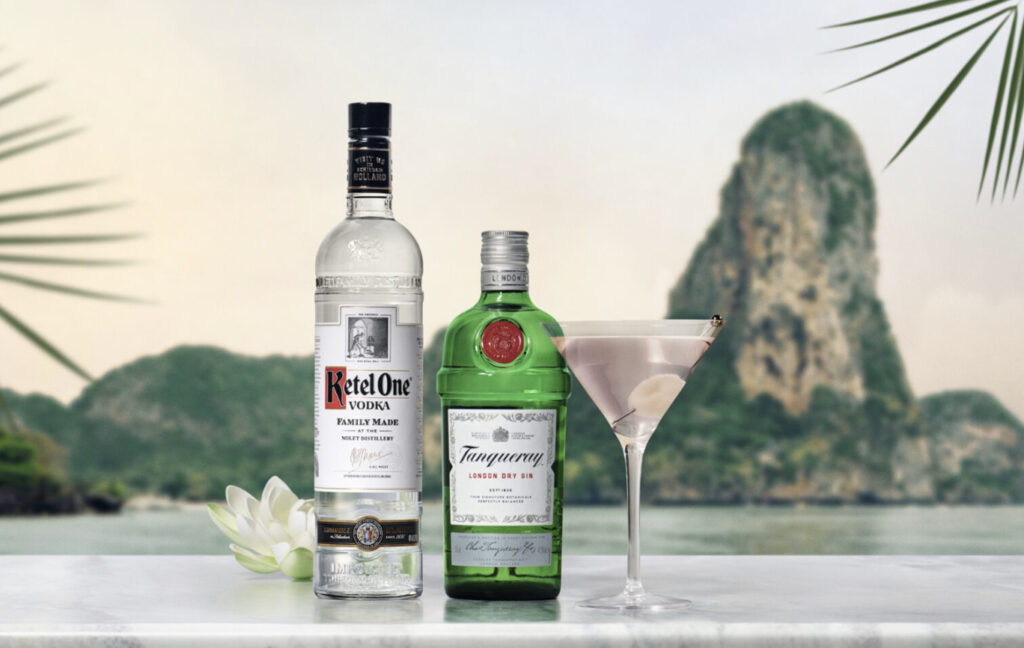
![Thanksgiving in Philly: perfect stuffing bread DOES exist – and it’s… [Find Recipe Inside]](https://philly.flavrreport.com/wp-content/uploads/2024/11/6D4A5499-1024x683.jpg)

